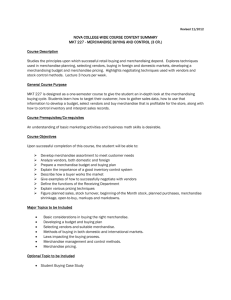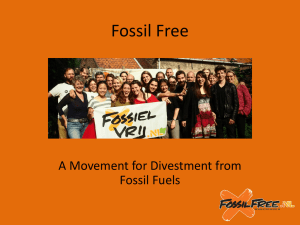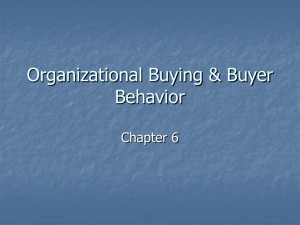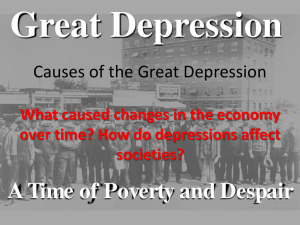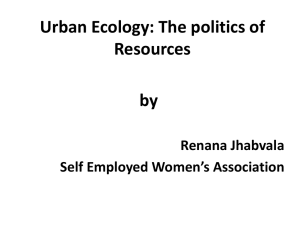Pros and Cons of Increasing Local Food
advertisement
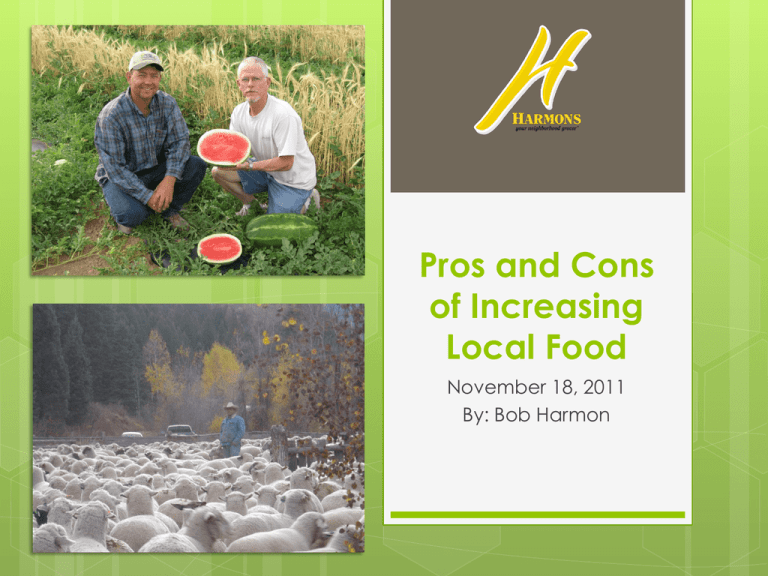
Pros and Cons of Increasing Local Food November 18, 2011 By: Bob Harmon PROS Reduce Energy Use Increase Partner with the Community Reinvest Lower in the Community Costs on Some Products Reduce Make Food Nutrition for Fresh Produce Food Miles Food System More Sustainable Reduce Carbon Footprint by Buying Local Save fossil fuels by shortening travel distance Reduce new pollution from long distance transportation Reduce Food Miles The average American food item travels 1,500 miles to consumer. 1 Reduce Energy Use Reduce Energy Use The Center for Sustainable Systems estimates that the U.S. Food System requires 7.3 units of (primarily) fossil fuel energy for each unit of food energy produced. 2 Any effort to reduce energy use will help to conserve fossil fuels, other energy, and will reduce pollution from energy use. Local Food Nutrition Some nutrients are lost from fresh fruits and vegetables after harvest. Conditions that Cause Loss of Nutrients Oxygen Vitamin A Vitamin C Folacin Mineral Salts U U S S Light U U U S S = Stable (no important destruction) U = Unstable (significant destruction) Heat U U S S Local produce will often have more nutrients because it has not been as long since it was taken from the plant. Harmons Local Vendor Partnerships Opportunity to partner with producers and farmers in our community. • • • • • • Winder Dairy Amano Chocolate Caffe Ibis Coffee Happy Monkey Hummus Lehi Roller Mills Flour Stratton Farms Produce • • • • • • Creminelli Pepperlane Beehive Prairie Grain Bread Morgan Valley Lamb Rockhill Creamery • • • • Jack Sprat Bread Miller’s Honey Cheese Bread Mania Laurie’s Buffalo Gourmet Chips Reinvesting in the Community Buying local is supporting the community you live and work in Money can be reinvested in local taxes and jobs Creates jobs in the community Supporting Local Means doing business with more than 700 Utah companies representing $246 million in direct local support. Based on the multiplier effect (Utah’s Own “every dollar spent on Utah products adds $4 to $6 to the local economy”) this totals approximately $984 million. Cost Effectiveness • Fair price buying from producer – We pay fair market value for the product • Investment at first, but the value outweigh • Save on transportation costs • Sustainable Partnerships – – – – 15 stores buying from the Local Vendor Gives vendors known retail location to sell goods Helps vendors to plan for the year’s production Helps vendors save money through better planning Benefits for Customers Lasts Longer Tastes Better Higher Quality Better Value Support Local Economy Reduce Energy Use and New Pollution CONS Limited quantity Limited variety Cost to set up Finances Distribution UPCs Challenges in selling Local Foods • • • • • Cost of Investment Buying local has some limitations in variety of products (can’t always find the exact type) It takes a lot of resources for small companies to get started and to get their brand known. Financing Payments – payments are often expedited instead of term payments. Local vendors are often small and need quick payment to keep business going Sometimes Local vendors will not have enough product for all 15 stores, so each store gets limited amount or only some stores get product. Sources 1. Sustainable Table. “Fossil Fuel and Energy Use,” (accessed November 3, 2011). 2. Center for Sustainable Systems, University of Michigan. 2010. “U.S. Food System Factsheet.” Pub. No. CSS01-06. 3. Extension Service, Oregon State University. October 2007. “What Counts? Nutrients in Fresh and Preserved Fruits and Vegetables.” SP 50-926.






